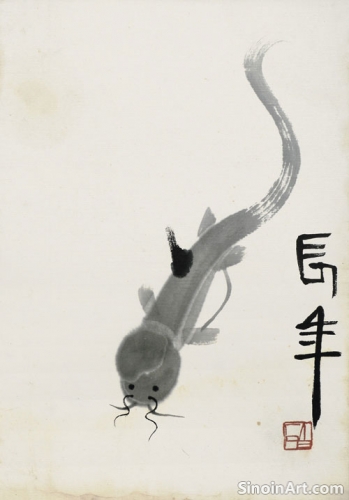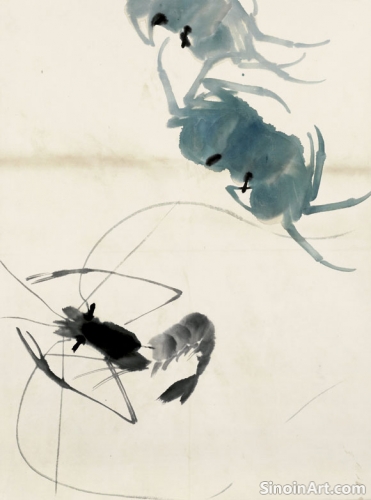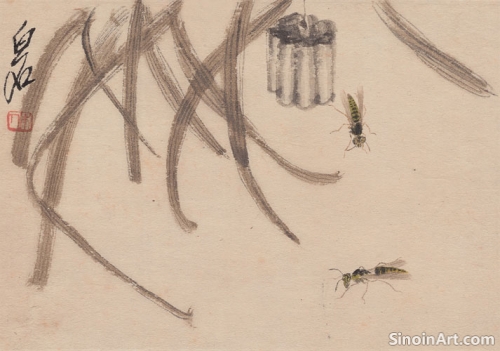Xieyi Painting and the Use of "Leaving the Brush"
|
The technique of "Leaving the Brush," or cángfēng (藏鋒), is an important element in Xieyi brushwork, referring to the way the artist begins and ends a stroke, concealing the tip of the brush to create lines that are both strong and subtle. It's a technique that adds a quality of depth and intentionality to the artwork. The technique represents a deliberate and subtle handling of the brush.  In cángfēng, the artist begins a stroke by drawing the brush into the paper, starting with the side rather than the point, and then ending the stroke by lifting the brush with a smooth, controlled motion. The stroke is not abruptly stopped; it has a feeling of continuation and a smooth transition.  This technique creates lines that have a subtle beginning and end, a quality that conveys inner strength, control, and intentionality. The feeling of power is not aggressive, but more like a calm, deep, flowing stream. It creates a feeling of subtlety and a power that is under control.  The use of cángfēng is often contrasted with "revealing the brush" (lùfēng), where the tip of the brush is clearly visible at the beginning or end of the stroke. Cángfēng aims for a feeling of subtlety and control, while lùfēng is a more overt and direct application of ink. Mastering the "Leaving the Brush" technique is essential for creating brushwork that is both powerful and refined, demonstrating a deep understanding of brush control and the principles of Xieyi. The subtle nuances in the strokes make a considerable difference to the overall feel and flow of the artwork. It is a key part of the skill of the artist. |
Tag : leaving the brush, concealed brush, Xieyi lines, subtle technique
Related information
- The Cultural Significance of Xieyi: Beyond Artistic Form
- Xieyi Painting and the Concept of "Yun Wei"
- The Influence of Literati Painting on Xieyi
- The Connection Between Xieyi and Chinese Gardens
- The Significance of the Seal in Xieyi
This article explores the cultural significance of Xieyi painting, highlighting its connection to Daoist philosophy, Chinese values, artistic heritage, and its role in preserving and expressing Chinese cultural identity.
Yun Wei (charm, flavor, aftertaste) is a vital aesthetic quality in Xieyi painting, referring to the overall sense of feeling, emotion, and lingering impression that an artwork creates in the viewer, achieved through mastery of technique, subtle nuances, and the ability to express underlying meanings, creating a lasting impact.
Xieyi painting is deeply influenced by the tradition of literati painting, emphasizing personal expression, calligraphic brushwork, the blending of poetry and painting, and the pursuit of simplicity and naturalness.
Xieyi painting and traditional Chinese gardens share a focus on naturalness, harmony, strategic use of negative space, and asymmetry, both creating microcosms of nature that foster contemplation, reflection, and a deeper connection to nature and the human spirit, displaying shared design principles and underlying goals.
The seal (yìn) is an essential component of Xieyi painting, serving as the artist's signature, authenticating the artwork, adding to its visual composition, and often expressing personal philosophy or tracing provenance, all within the context of Chinese artistic tradition.